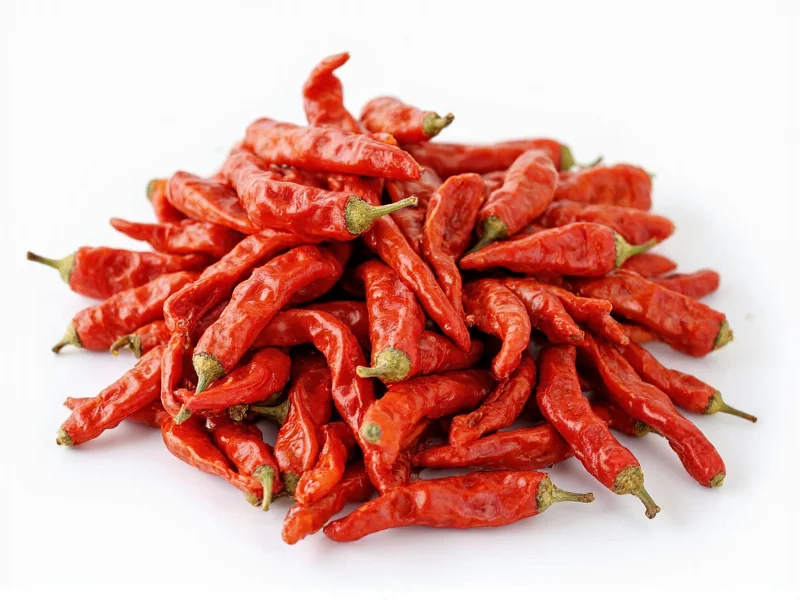When exploring the world of dried chilies, mild varieties offer an accessible entry point for home cooks seeking flavor complexity without overwhelming heat. Unlike their fiery counterparts, mild dried chilies deliver nuanced taste profiles that enhance rather than dominate dishes. Understanding these peppers' characteristics helps transform everyday cooking through subtle yet impactful flavor additions.
Common Mild Dried Chili Varieties
Mild dried chilies encompass several distinct pepper types, each contributing unique flavor dimensions to culinary creations. The most accessible mild dried chili pepper varieties include:
| Chili Type | Heat Level (SHU) | Flavor Profile | Common Culinary Uses |
|---|---|---|---|
| Ancho (dried poblano) | 1,000-2,000 | Earthy, raisin-like, subtle sweetness | Mole sauces, chili, braises |
| Pasilla (dried chilaca) | 1,000-2,500 | Prune-like, berry notes, mild smokiness | Salsas, stews, adobo sauces |
| Guajillo | 2,500-5,000 | Tangy, berry-like, tea notes | Red sauces, marinades, soups |
| Chipotle Morita | 2,500-8,000 | Smoky, sweet, mild heat | Barbecue sauces, beans, braises |
While technically bordering on medium heat, guajillo and chipotle morita remain approachable for those seeking mild dried chili pepper varieties. Ancho peppers, derived from dried poblano peppers, represent the mildest option with their characteristic deep red color and wrinkled texture.
Understanding Flavor Profiles vs. Heat Levels
The misconception that all dried chilies equate to extreme heat prevents many cooks from exploring these valuable ingredients. Mild dried chilies primarily contribute flavor complexity rather than spiciness. Their heat measurement in Scoville Heat Units (SHU) typically remains under 2,000, comparable to a bell pepper's zero SHU or jalapeño's 2,500-8,000 SHU range.
Flavor characteristics often outweigh heat considerations when selecting mild dried chilies. Anchos provide chocolatey undertones ideal for mole sauces, while pasillas offer dried fruit notes perfect for adobo preparations. Recognizing these distinctions helps home cooks make informed decisions when substituting mild dried chilies in recipes.
Practical Culinary Applications
Successfully incorporating mild dried chilies requires proper preparation techniques. Before use, most varieties benefit from toasting and rehydration:
- Remove stems and seeds using scissors or a small knife
- Dry toast in a skillet over medium heat for 15-30 seconds per side until fragrant
- Soak in hot water for 15-20 minutes until softened
- Blend into smooth sauces or incorporate directly into dishes
For beginners exploring dried chili peppers, starting with pre-ground ancho powder simplifies integration into rubs and spice blends. The best mild dried chilies for beginners maintain consistent flavor without unexpected heat spikes. When substituting mild dried chilies in recipes, maintain equivalent quantities while adjusting for slight flavor variations between types.
Storage and Shelf Life Considerations
Proper storage preserves the delicate flavors of mild dried chilies. Keep whole dried peppers in airtight containers away from light and heat. Under optimal conditions, they maintain peak quality for 6-12 months. Ground versions lose potency more quickly, typically within 3-6 months.
Signs of degraded quality include faded color, diminished aroma, and brittle texture. While not harmful, stale mild dried chili peppers deliver muted flavors that fail to enhance dishes properly. Freezing extends shelf life to 18-24 months but requires careful moisture protection.
Nutritional Benefits and Considerations
Mild dried chilies contribute more than flavor—they offer nutritional advantages including vitamin A, vitamin C, and capsaicinoids in moderate amounts. These compounds provide antioxidant benefits without the digestive discomfort associated with hotter varieties. The differences between mild and hot dried chilies become particularly relevant for those with sensitive systems seeking flavor without irritation.
When rehydrating dried mild chili peppers, retaining the soaking liquid captures additional flavor compounds. Strain through cheesecloth to remove any remaining seeds or skin fragments before incorporating into sauces or soups.
Conclusion
Mild dried chilies represent one of cooking's most versatile yet underutilized ingredients. Their ability to add depth and complexity without overwhelming heat makes them valuable for both novice and experienced cooks. By understanding the differences between mild and hot dried chilies and learning proper preparation techniques, home chefs can elevate everyday dishes through subtle flavor enhancements. Whether crafting authentic Mexican mole or experimenting with global fusion cuisine, mild dried chilies offer a gateway to sophisticated flavor development that transcends simple heat measurement.











 浙公网安备
33010002000092号
浙公网安备
33010002000092号 浙B2-20120091-4
浙B2-20120091-4